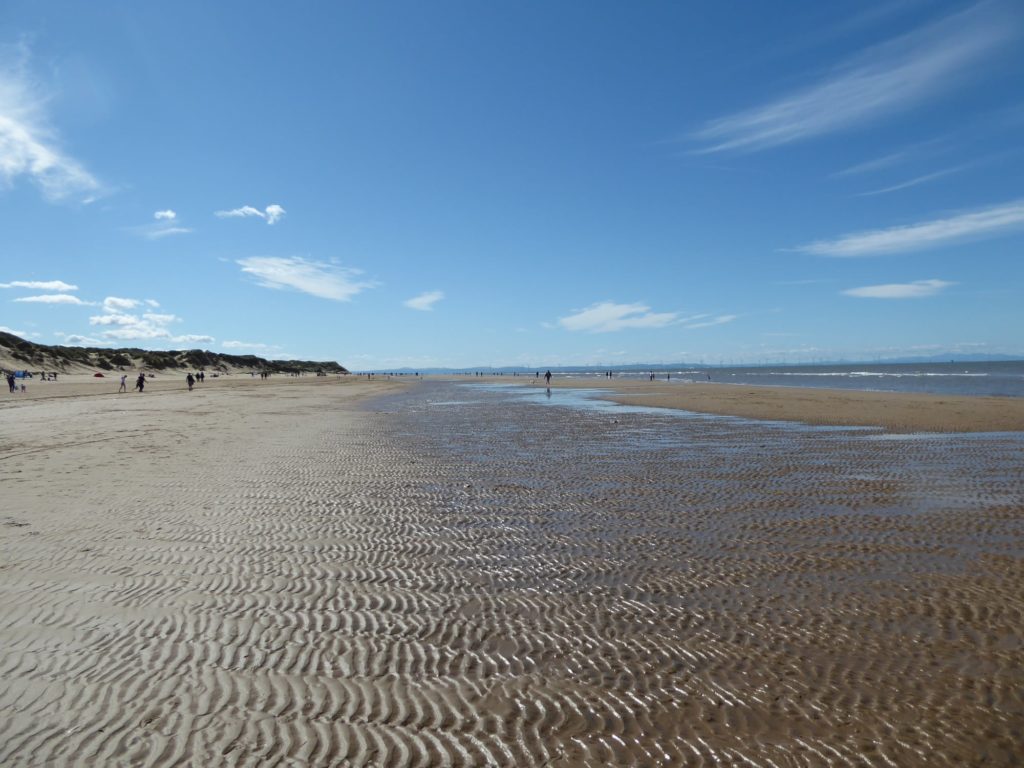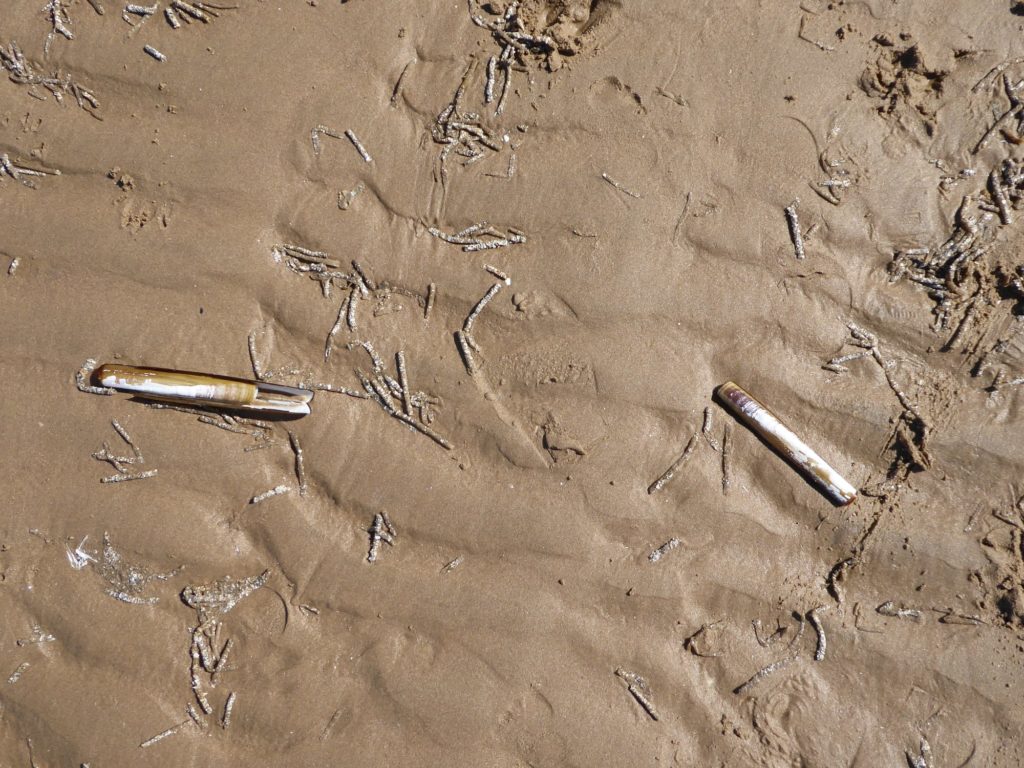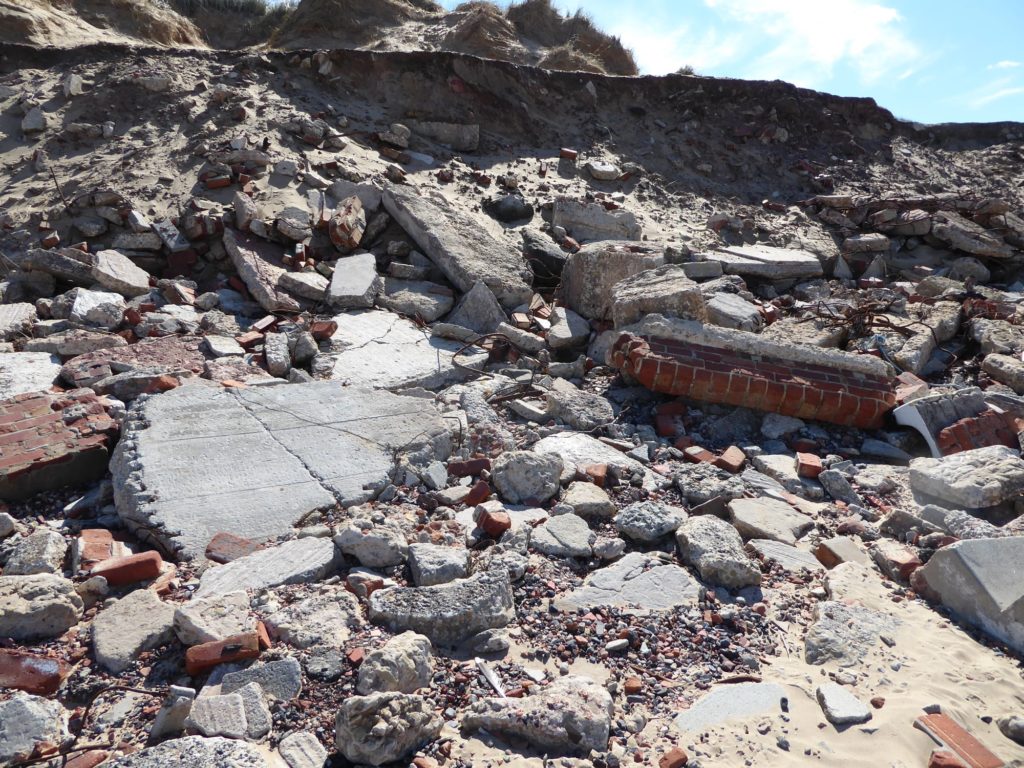Kenn Taylor swaps urban narrowness for Formby’s winds and grit.

The vastness of the vista when you reach the peak of the Freshfield dunes is enough to encourage a sharp intake of breath, even when the winds aren’t up. Just before the shuffle, often ankle-deep, down the loose grain sands to sea level.
Such expanse so close to intense urban life can surprise many, the lay of the land keeping all that density just out of view here. Very different to the beach at Crosby, with its Iron Men, suburbia just behind and the striking colours and angular shapes of the container port adjacent. That’s an attractive scene too, but not otherworldly like Freshfield can seem, just a few train stops further along.
A line of sky, a line of water, a line of sand. Long stretched streams of cloud vapour, separating at the edges like torn cotton wool. Freshfield can almost seem like a child’s picture of the coast. The thin frames of the wind turbine clusters waving at a steady beat in the distance, the only continual indicators of the industrial world in this space. Beyond those though, a view further to the black undulating hills of Wales.
In some lights from the top of the dunes, the Freshfield sands seem almost grey. A stretching moonscape butting against water that often appears far more tranquil than the reality of the intense currents and tidal range of the Mersey estuary and Liverpool Bay. The optical illusion across these horizons makes the huge industrial block colour ships that sail past appear much closer than they really are. As if you could paddle out in shallow waters and touch them.
The Irish sea winds whip the sands into wisping streams, giving visibility to the air and a flecking of grit that on some days forces you to close your eyes against it. The wind and moreso the tide never let up here, eating away day after day at the coastline, slowly pushing it back and advancing the course of the sea. The dunes are the principal barrier, their tufts of grass struggling to the surface, curved in the direction of the wind like punk hairdos. Behind them, the other barrier: tall pine trees, the sun breaking through their foliage to spotlight the ground. They can give the impression of ancient forest, though in some respects they’re almost as artificial as the wind turbines and often shorter lived. It’s only once through these trees you can see the road back to wealthy commuter towns and those frequent electric trains.

The sands seem smooth from a distance, but their dips and craters, fragments of dirt and life, soon show up as soon as you get close enough. Sand deeply ridged by the pull of the tide. Sand sucking down and piling up, devouring flimsy fences.
And there, revealed by collapsing, receding dunes, piles of odd chunky fragments of rubble shaped by years of tides. All this hastily dumped during WWII after the heavy Blitz raids on Merseyside, a temporary fix in an emergency with no thought for long term. Here they still are.
Jagged, bubbled lumps of aggregate sit next to once deep red angular bricks now washed pink and smoothed around the edges. Large, ominous looking chunks of concrete, their original purpose now lost, stand out squat amongst them. Here though clearly what was once two steps. There, the straight, carefully-laid remains of a wall, chunks of crumbling cement still futilely clinging to it. Rusting twisted spiders legs of re-enforcement stick out, escaping the pile where they can. Still a danger, these fragments of long lost buildings. A reminder of the terrible destruction of that war on the nearby city. This debris slowly, ever further, getting broken down. Now coloured pebbles. One day sand.

Freshfield is an outlet valve for the city. An easy place to go without needing a car to get lost amongst the many peaks and troughs of the dunes with yourself or others. There’s always a human craving for wide open space that overwhelms us. Reduced to our smallness when separated from our crowds and our constructions. Casting our shadows on the waters, footprints are soon smoothed away, as this landscape remains as indifferent to the human presence as it can. The remains of the war will take longer to disappear, but will do just as inevitably.
When the ships have stopped and the electric trains too, there’s just the wind and spinning of the distant turbines powering kettles and lighting lamps back in cities and towns. The space in Freshfield goes on and on and that going on is a deep reminder. A blowing away of the narrowness that we build around ourselves in screens and queues and buses and cracked paving stones. A reminder for when we go back to our urban lives where the wind has no sand grit nor strength to blast the eyes and the lungs.
*
Kenn Taylor is a writer and creative producer with a particular interest in culture, community, class and place. He was born in Birkenhead and has lived and worked in Liverpool, London, Bradford, Hull and Leeds. His work has appeared in a range of outlets, from The Guardian and The Big Issue to Elsewhere Journal and Liverpool University Press. Visit his website here.